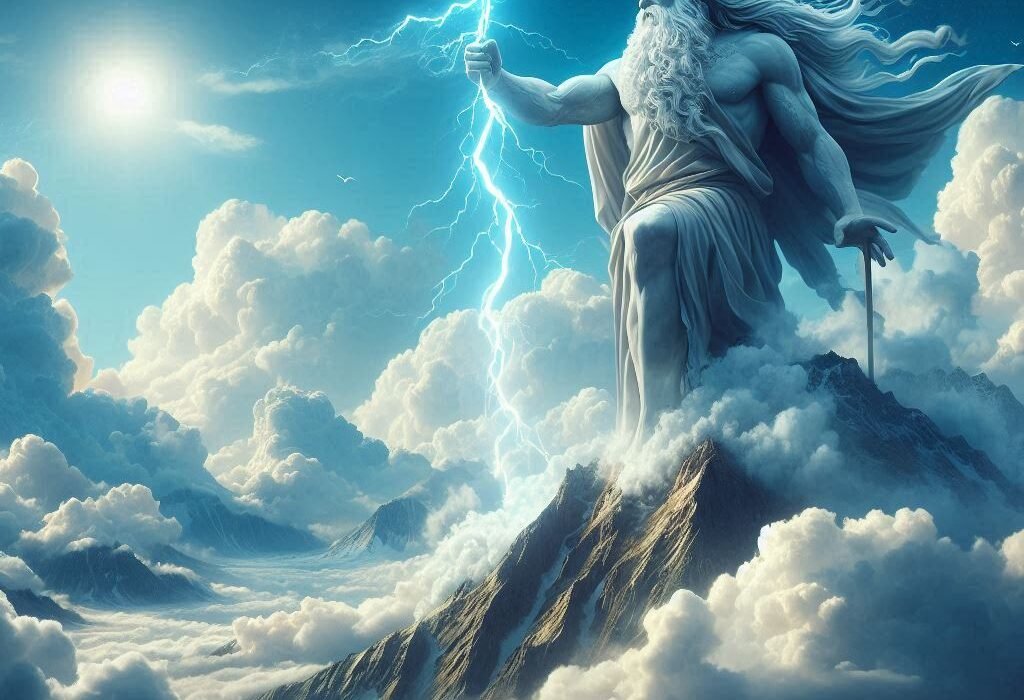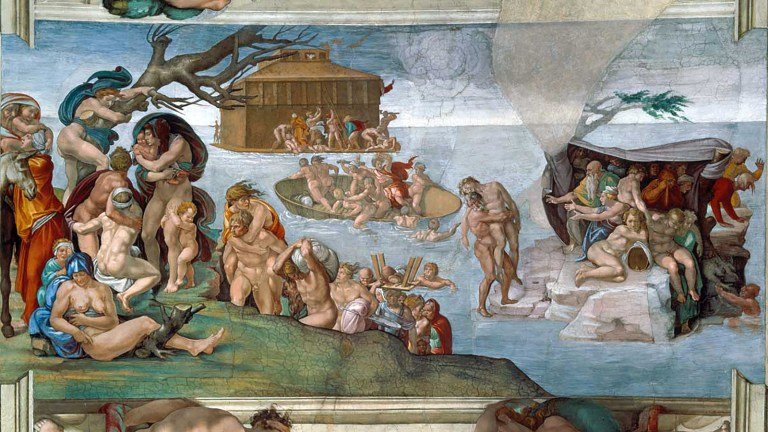Long before satellites tracked hurricanes, seismographs measured earthquakes, or meteorologists issued storm warnings, people still faced nature’s fury. Volcanoes erupted without notice, the earth quaked underfoot, tidal waves swallowed coastlines, and lightning slashed the skies with terrifying power. To ancient peoples, these were not random or scientific events—they were signs. They were messages, punishments, or dramas acted out by gods, giants, spirits, or demons.
Every culture, from the ice-covered lands of the Norse to the sun-baked cities of the Maya, had stories to make sense of the chaos. These myths weren’t simply fiction; they were attempts to explain the inexplicable. They carried wisdom, offered warnings, and shaped entire belief systems. They turned blind panic into meaning, and in doing so, they formed some of the most powerful stories in human history.
This article takes you on a journey through time, across continents, and into the minds of ancient people. We will explore how earthquakes, floods, volcanoes, storms, droughts, and comets were interpreted not through science, but through the imagination of myth.
Earthquakes: The Shaking of Worlds
Few disasters are as viscerally terrifying as an earthquake. The solid ground turns fluid, buildings sway like reeds, and the line between safety and death vanishes in moments. Ancient peoples, witnessing the violent power of an earthquake, naturally sought divine or supernatural causes.
In Japanese mythology, earthquakes were believed to be caused by a giant catfish named Namazu, who lived beneath the earth. When he thrashed, the land trembled. To keep Namazu still, the gods placed a massive stone over him, and the deity Kashima was tasked with keeping the fish subdued. When Kashima failed or grew tired, Namazu wriggled free—shaking the earth in fury.
In Greek mythology, the god Poseidon held dominion not just over the sea but also over earthquakes. Called “the Earth-Shaker,” Poseidon would strike the ground with his trident when angered, splitting mountains and leveling cities. His wrath was personal—a response to human arrogance or broken oaths.
Inca myths speak of Pachamama, the earth goddess. When she became angry with humanity’s disrespect—whether through pollution, war, or neglect—she would shift her body, resulting in earthquakes. Here, the disaster was not random but a response to human behavior, a cosmic form of discipline.
These stories humanized the Earth’s movement. Instead of tectonic plates, they envisioned emotional beings reacting to offense, restlessness, or divine plans. The myth turned natural horror into narrative.
Volcanoes: Gates to the Underworld
Volcanoes inspire both awe and fear. They tower silently for centuries and then explode with hellish fury. Ancient cultures often associated them with the underworld or the anger of fire gods.
In Hawaiian mythology, the fiery volcano goddess Pele resides in the Halemaʻumaʻu crater of Kīlauea. Known for her passionate temper, Pele’s eruptions are seen as acts of creation and destruction. She builds land with lava while consuming forests and villages. Pele’s stories involve jealousy, betrayal, and love—mirroring the explosive cycles of volcanic eruptions.
The Romans feared Vulcan, god of fire and forge, who worked deep within Mount Etna or Vesuvius. His hammering caused tremors, and his furnaces belched smoke. Eruptions were believed to be Vulcan’s forge overheating or the gods sending a warning.
In Indonesian mythology, especially around Java and Bali, volcanoes were considered sacred homes of the gods. Mount Merapi, a volatile volcano, was believed to house spirits who must be appeased with offerings. When these spirits were angered or ignored, they would punish humans with fire and ash.
These volcanic myths reveal a common theme: a divine presence residing within the mountain. The eruption is not merely geological—it’s emotional, ethical, or moral. Human behavior can influence whether the mountain sleeps or screams.
Floods: Waters of Judgment and Renewal
Flood myths are among the most widespread of all disaster legends. From the Bible’s Noah to Mesopotamia’s Utnapishtim to the Hindu Manu, cultures across the world tell of a time when water rose up and swallowed the earth.
In the Judeo-Christian tradition, the story of Noah’s Ark is central. Displeased with the corruption of humanity, God decides to purge the Earth with a flood, sparing only Noah and his family. The flood is both punishment and purification, a rebirth of creation.
Mesopotamian myths, especially the Epic of Gilgamesh, contain strikingly similar elements. The gods, tired of human noise and sin, unleash a flood to silence the world. Utnapishtim, a wise man warned by the god Ea, builds a boat to save life. After the deluge, he releases a bird to find dry land—just as Noah does.
In Hindu mythology, the god Vishnu takes the form of a fish (Matsya) and warns the righteous King Manu of an impending flood. Manu builds a boat, brings seeds and animals, and survives the destruction. Afterwards, he repopulates the world.
Mayan myths describe multiple creations and destructions. In one cycle, the gods destroy humans with floods because they failed to respect the divine order.
Floods are archetypes of divine judgment. But they also carry themes of cleansing and starting anew. The floodwaters wash away sin, ignorance, or hubris—and out of the destruction comes the possibility of a better world.
Thunderstorms and Lightning: Celestial Warfare
Few things feel as personal and angry as a thunderstorm. The roar of thunder and the jagged flash of lightning have always been interpreted as signs of the gods battling or speaking.
In Norse mythology, the thunder god Thor wields Mjölnir, his mighty hammer. When he rides across the sky in a chariot pulled by goats, lightning flashes and thunder rolls. Storms are his battles against the giants, cosmic forces of chaos. The thunder is his hammer striking, pushing back the darkness.
For the Yoruba people of West Africa, the god Shango commands thunder and lightning. A fiery warrior, he hurls lightning bolts from the heavens, and his presence is feared and respected. Thunder is his voice, and fire his weapon. Shango’s wrath could burn villages or reward the faithful with rain and harvest.
Slavic traditions speak of Perun, a thunder god who rides the skies and hurls lightning bolts to fight the serpent Veles, a god of the underworld and chaos. Every storm is part of their eternal struggle.
Lightning myths are battle stories. The sky becomes a battlefield, and storms are expressions of divine conflict. Whether gods are punishing evil, fighting monsters, or asserting dominance, the lightning is rarely random—it is purposeful and symbolic.
Drought and Famine: The Silence of the Divine
While floods overwhelm, droughts starve. The absence of rain was as deadly to ancient peoples as fire or earthquake. When the sky withheld water, they saw it as abandonment—or punishment.
In Ancient Egypt, the Nile’s regular flooding was essential. A failure of the Nile’s cycle meant famine and chaos. Such droughts were interpreted as the gods’ disfavor, often due to political unrest, impiety, or disruption of sacred rituals.
In Greek myth, the story of Demeter and Persephone explains seasonal drought. When Hades abducts Persephone to the underworld, her mother Demeter, goddess of the harvest, mourns and refuses to let anything grow. Her grief causes famine. Only when Persephone is returned does the earth blossom again—symbolizing the cycle of the seasons.
Native American tribes, such as the Hopi and Zuni, believed droughts were caused by failing to honor rain spirits or perform sacred dances. The Kachina spirits, who brought rain, would withhold it if communities broke taboos or disrespected the land.
These myths do more than explain drought—they offer solutions. Prayers, dances, rituals, and moral behavior could restore balance. The sky was not just a source of rain—it was a divine entity watching human conduct.
Comets and Celestial Events: Omens of Doom
When strange lights appeared in the sky—comets, eclipses, meteor showers—ancient peoples often saw them as omens. These were not natural events; they were divine messages, often warnings of disaster.
The Aztecs believed that comets were daggers from the gods, portents of death and destruction. The arrival of Halley’s Comet in 1066 was interpreted in Europe as a sign of impending doom, coinciding with the Norman invasion of England.
In Chinese tradition, astronomers meticulously recorded comets and eclipses, associating them with the deaths of emperors or the fall of dynasties. A comet was often seen as “the broom star,” sweeping away order and bringing chaos.
Medieval Europe saw celestial events as signs of divine displeasure or the Devil’s influence. The fear surrounding these events often led to religious panics or witch hunts.
What modern astronomy sees as orbits and refraction, ancient people saw as divine punctuation marks—events so rare and beautiful they could only be the work of gods or demons.
Firestorms and Pestilence: Divine Cleansing or Curse
Large wildfires and plagues have also found places in ancient myths. Fire from the sky, or sweeping through forests and towns, was often seen as cleansing or judgment.
In the Old Testament, fire rained down on Sodom and Gomorrah for their sins. The firestorm wasn’t just natural—it was a verdict.
In Hindu myths, the god Shiva, in his form as Rudra, can unleash flames of destruction to burn the world and prepare it for rebirth. Destruction is never final—it is the necessary step before creation.
Plagues, too, were mythologized. In Greek mythology, Apollo sent plagues on cities that dishonored him. In the Iliad, a plague strikes the Greek army because Agamemnon insults Apollo’s priest. Disease was not just biology—it was social and spiritual imbalance.
Conclusion: The Mythical Mind and the Living Earth
Ancient myths about natural disasters were not naive or foolish—they were expressions of awe, terror, morality, and connection. These myths framed the earth as alive, its convulsions as communication. They offered explanations, yes, but also responsibility. Human actions mattered. The gods watched. Nature responded.
Today, we understand tectonics, atmospheric pressure, and epidemiology. But the power of those old myths still lingers. They remind us that nature is not just a set of systems—it’s a story we live within. In the age of climate change, as the Earth trembles again beneath our feet, perhaps it’s time to listen—not for thunder from a god, but for the meaning we still give to every disaster.
Because even now, when the sky cracks open or the sea rises high, we still ask: What have we done? And what must we learn?





